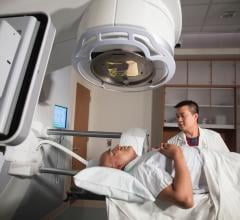The World Health Organization (WHO) Collaborating Centre on Patient Safety (Solutions), the World Alliance for Patient Safety and the Commonwealth Fund today announced a seven-country collaborative project that will leverage the implementation of five standardized patient safety solutions to prevent avoidable catastrophic events in hospitals. The "Action on Patient Safety" project will be coordinated by the WHO Collaborating Centre, which is led by the Joint Commission on Accreditation of Healthcare Organizations and its affiliate Joint Commission International.
The initiative builds on the partnership established by the Commonwealth Fund with Australia, Canada, New Zealand, the United Kingdom, and the United States of America, and the more recent expansion of this international program to include Germany and the Netherlands. The overall goal of the initiative is to achieve significant, sustained, and measurable reduction or elimination of five highly prevalent patient safety problems in selected hospitals in each country over a five-year period (hence "High 5s").
"No health care knowledge is more important than how to prevent harm to patients," says Sir Liam Donaldson, M.D., Chair of the WHO World Alliance for Patient Safety. "However, action to reduce known risks has often been far too slow. The High 5s initiative creates a major opportunity to meet this urgent need."
"The High 5s project is a ground-breaking initiative, leveraging the power of cross-national learning among seven countries, using evidence-based protocols to make real strides in protecting patients from preventable tragedies," say Karen Davis, President, Commonwealth Fund.
The solution areas selected for the High 5s initiative were drawn from a broader set of patient safety solutions that are being developed by the WHO Collaborating Centre for Patient Safety for distribution to all of the WHO member nations later in 2007. These include:
* Prevention of patient care hand-over errors
* Prevention of wrong site/wrong procedure/wrong person surgical error
* Prevention of continuity of medication errors
* Prevention of high concentration drug errors
* Promotion of effective hand hygiene practices
A patient safety solution is defined as any system design or intervention that has a demonstrated ability to prevent or mitigate patient harm resulting from patient care processes. The Collaborating Centre will work with the participating countries to refine the current draft solutions through the development of standardized operating protocols similar to those used in high reliability industries such as aviation and nuclear energy.
"We want this to be a truly collaborative effort, with all participants sharing what they’ve learned as they implement the various standardized operating protocols," says Dennis S. O’Leary, M.D., President, Joint Commission on Accreditation of Healthcare Organizations. "We will have a project website that is specifically designed to exchange and disseminate knowledge and innovative ideas about improving patient safety."
"Patient safety is a challenge facing nations in all regions of the world," says Karen Timmons, CEO, JCI. "There is a real sense of excitement among the participating nations that this project could make a sustained contribution by taking patient safety solutions to the next level and eventually making them available around the world."
Each of the seven countries will be expected to identify a technical lead agency to coordinate the High 5s initiative within its borders. Each agency will in turn enroll approximately 10 hospitals (or perhaps more in some countries). These hospitals will comprise the planned learning collaborative, and each will select up to five safety solutions from among those identified for the project. Project impacts will be measured using a package of tools that will include patient safety indicators (developed by the U.S. Agency for Healthcare Research and Quality), root cause analyses of indicator events and other adverse events, periodic organization culture assessments, and economic impact indices.
"AHRQ is very pleased to be part of this global effort to improve patient safety because it will result in measurable improvements in the lives of the world’s citizens," says Carolyn M. Clancy, M.D., Director of the U.S. Agency for Healthcare Research and Quality. "The five solutions selected as the focus of the High 5s initiative are key to ensuring that safe, high-quality care is a universal standard around the world."


 June 07, 2022
June 07, 2022 








